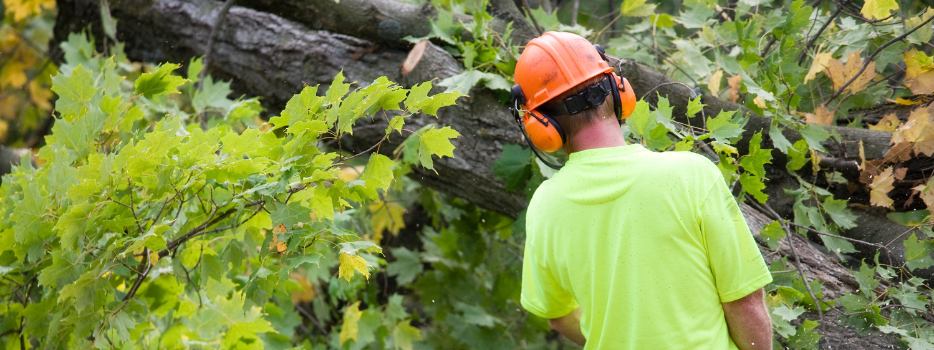Operating a tree trimming business involves unique challenges and risks. Ensuring the safety of your team while managing the various aspects of the business is crucial for success. This article will provide some essential safety tips.
Tree care specialist safety tips
Provide personal protective equipment (PPE).
Using the appropriate PPE is fundamental to protecting workers from injuries and reducing lost time at work. Essential PPE includes helmets, gloves, safety glasses, ear protection, and appropriate footwear.
Inspect the area before beginning work.
Here are some hazards to watch for:
- Power lines – If there are any low-hanging power lines nearby, be sure you have enough clearance before using your equipment.
- Broken or diseased branches – If you notice that some branches are barely hanging on, take note and let people on the ground know. The goal is to prevent unexpected falling branches before and after the work begins.
- Unstable or weakened trees – An unstable tree may change your work plan and require additional safety steps to be taken.
Use properly maintained tools.
Adhering to regular maintenance schedules can help prevent accidents and serious injuries. If you’re not mechanically inclined, consider visiting your local hardware store, small engine store, or authorized service center for assistance. They may be able to replace worn-out or damaged parts more efficiently.
Encourage proper training and certifications.
Properly trained employees will be more efficient and will likely adhere to safety guidelines. In addition, industry certifications can also enhance your staff’s professionalism. Lastly, remember that learning is a lifelong journey and refresher courses are necessary.
Use proper climbing equipment.
Having the right equipment can ensure your employees stay safe on the jobsite. Equipment includes:
- A well-fitted climbing harness.
- High-quality ropes for climbing and securing.
- Locking carabiners to ensure safe attachment points.
- High-quality lanyards to keep employees secured to the tree.
Follow proper climbing technique.
Proper technique includes smooth movements and appropriate body positioning and foot placement.
Have an emergency preparedness plan in place.
A well-defined and understood plan can help employees respond to colleagues’ injuries and potentially save lives.
Provide employees with appropriate communication devices.
Cellular service may be unreliable or unavailable at jobsites. Alternative communication devices include two-way radios, Bluetooth headsets, whistles, and hand signals.
By following these guidelines, your tree trimming business can thrive while ensuring the safety of your team and delivering exceptional service to your clients.






